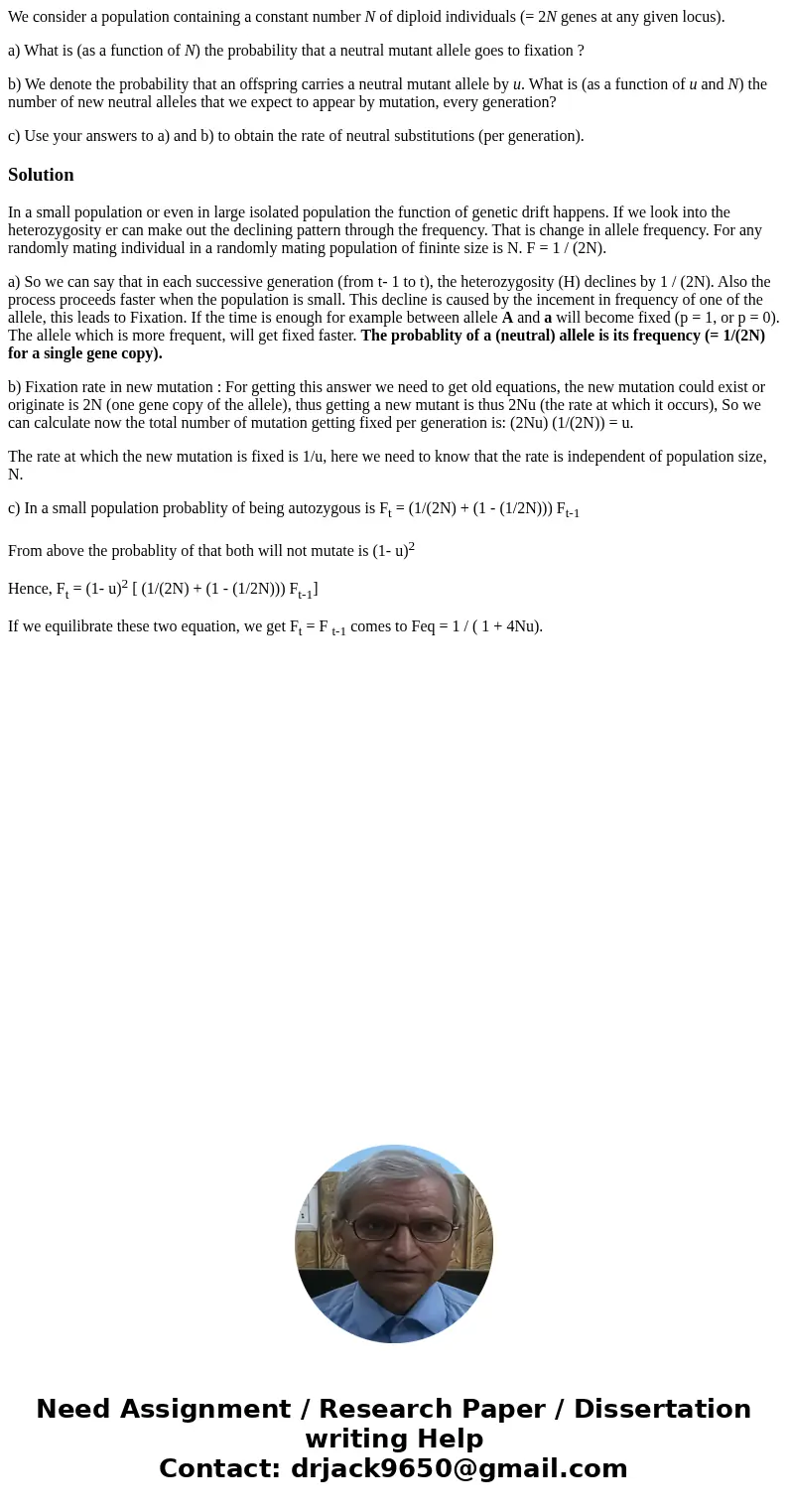We consider a population containing a constant number N of d
We consider a population containing a constant number N of diploid individuals (= 2N genes at any given locus).
a) What is (as a function of N) the probability that a neutral mutant allele goes to fixation ?
b) We denote the probability that an offspring carries a neutral mutant allele by u. What is (as a function of u and N) the number of new neutral alleles that we expect to appear by mutation, every generation?
c) Use your answers to a) and b) to obtain the rate of neutral substitutions (per generation).
Solution
In a small population or even in large isolated population the function of genetic drift happens. If we look into the heterozygosity er can make out the declining pattern through the frequency. That is change in allele frequency. For any randomly mating individual in a randomly mating population of fininte size is N. F = 1 / (2N).
a) So we can say that in each successive generation (from t- 1 to t), the heterozygosity (H) declines by 1 / (2N). Also the process proceeds faster when the population is small. This decline is caused by the incement in frequency of one of the allele, this leads to Fixation. If the time is enough for example between allele A and a will become fixed (p = 1, or p = 0). The allele which is more frequent, will get fixed faster. The probablity of a (neutral) allele is its frequency (= 1/(2N) for a single gene copy).
b) Fixation rate in new mutation : For getting this answer we need to get old equations, the new mutation could exist or originate is 2N (one gene copy of the allele), thus getting a new mutant is thus 2Nu (the rate at which it occurs), So we can calculate now the total number of mutation getting fixed per generation is: (2Nu) (1/(2N)) = u.
The rate at which the new mutation is fixed is 1/u, here we need to know that the rate is independent of population size, N.
c) In a small population probablity of being autozygous is Ft = (1/(2N) + (1 - (1/2N))) Ft-1
From above the probablity of that both will not mutate is (1- u)2
Hence, Ft = (1- u)2 [ (1/(2N) + (1 - (1/2N))) Ft-1]
If we equilibrate these two equation, we get Ft = F t-1 comes to Feq = 1 / ( 1 + 4Nu).

 Homework Sourse
Homework Sourse